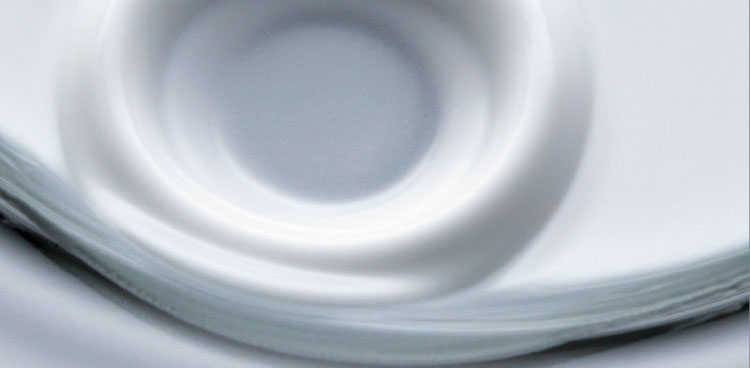High-temperature resistant release agents and lubricants
Boron nitride – the all-rounder for high-temperature applications

Hot molten metals are highly aggressive. They can stick, attack mold walls, melting pots, thermocouple protection tubes and press rams through corrosion. Optimal process control, trouble-free production and the highest quality can only be guaranteed by using the correct release agents and lubricants.
Because it’s non-flammable, hexagonal boron nitride (α-BN) offers an alternative to conventional oil-based release agents and lubricants, which are quick to ignite and leave undesirable soot particles on the finished surfaces. The white, extremely fine BN powder, also known as white graphite, does not oxidize. Aqueous boron nitride suspensions are used as a protective coating for systems performing high-vacuum metallization with aluminum, as well as a release agent and protective coating in galvanizing plants. BN coatings provide electrical insulation and are resistant up to approx. 900 °C in air, approx. 1,400 °C in a vacuum and approx. 2,000 °C in inert gas.
The excellent separation properties of BN are tried and tested in aluminum melts. For example, boron nitride promotes sliding of the liquid light metal, protects casting molds, launders from corrosion and extends the service life of all components that come into contact with the molten metal. Hexagonal boron nitride is not wetted by liquid aluminum and does not adhere to all types of substrates. In order to act as a release agent, BN must be mixed with a refractory binder. These coatings can be used flexibly up to 800 °C, do not flake off and are highly scratch-resistant. Depending on the application, the suspensions can be processed by brushing, rolling, dipping or spraying. The results are improved service times, shorter downtimes during processing, more castings per coating and reduced personnel costs for the coating, which translates into higher overall profitability of the foundry.
Advantages of BN-containing lubricants and release agents for aluminum melts:
- Excellent release properties
- Exceptionally good adhesiveness
- Significant hardness and chemical resistance
- Less wear from the melt, no iron incorporation by the melt
- Coatings with thicknesses of up to 1.5 mm; different coating thicknesses also possible
- No crack formation in the coating
- Environmentally friendly, not harmful to health
In aluminum extrusions, powdered boron nitride has proven itself as a release agent for the slide surfaces of pressing tools. It prevents the cylindrical aluminum block from sticking to the extrusion punch and, in extreme cases, from being pulled out again when the press is moved back. Up to now, oils, greases or soot have been used as lubricants and release agents, but they’re easily flammable at process temperatures of approx. 450 °C. There’s a risk that soot particles will be drawn into the extrusion press and leave behind surface contaminants. The boron nitride platelets, on the other hand, are larger than the soot particles and cannot be absorbed by the surface area of the aluminum profile. This significantly improves the surface quality, even at high temperatures. BN powder is applied electrostatically as a spray or in the form of suspensions and provides extrusion tools with reliable protection against corrosion and dirt, even in the tool store. Depending on the thickness of the coating, an application will last five to six press cycles.
Advantages of BN-containing lubricants and release agents in aluminum extrusion:
- Excellent lubricating and release effect
- High product quality due to cleanliness in the pressing area
- Cost-effective consumption
- Low coating frequency
- Longer service life, improved corrosion protection for the pressing tools
- Environmentally friendly, not harmful to health
Sources:
PI_boron_nitride_alu_extrusion_e
PI_boron_nitride_suspension_wp_e
PI_boron_nitride_suspension_ws_e
PI_suspension_cast_m_e
Reprint_0810_ALUMINIUM_10-2008_Intelligent-ceramics_d+e_final
http://www.keramverband.de/keramik/pdf/07/sem07-13.pdf

